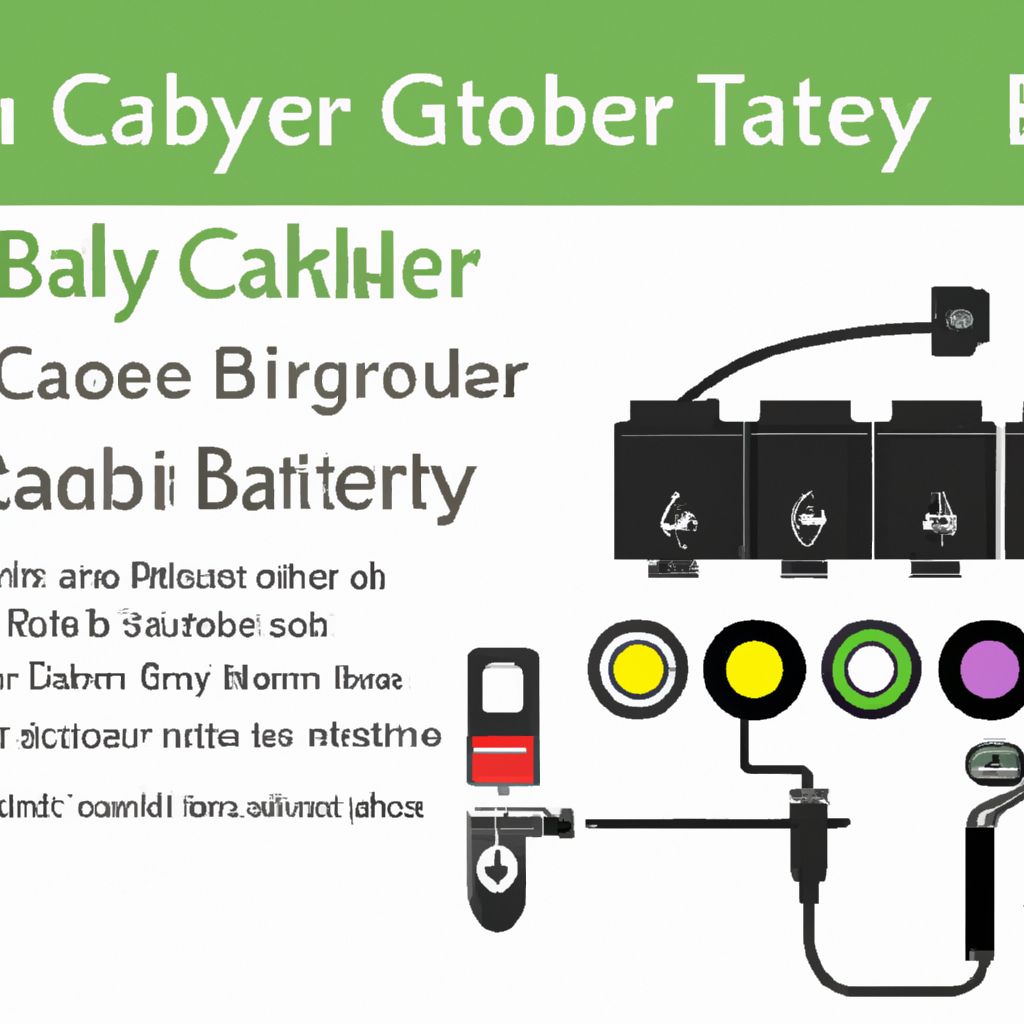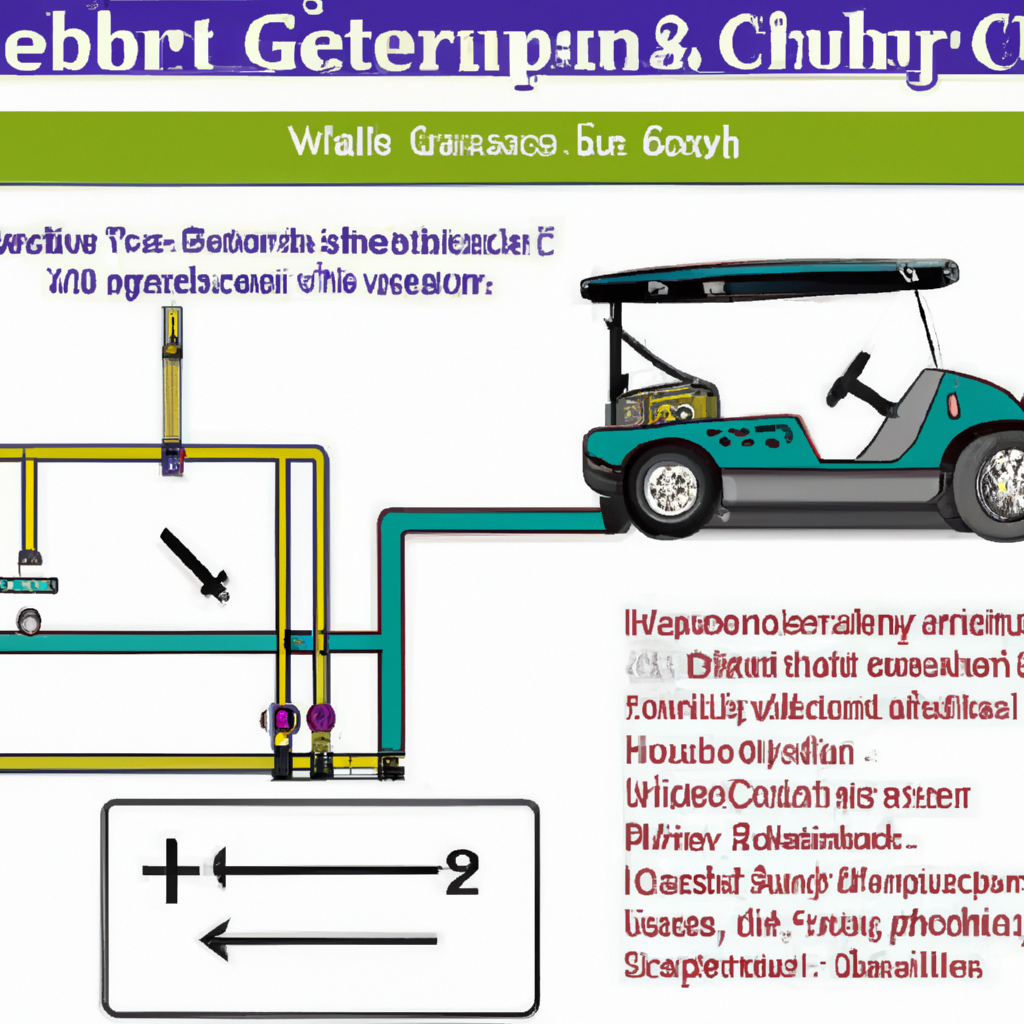Alright, so you finally got yourself a sleek golf cart and now you’re wondering how to wire those batteries to get it up and running smoothly. Well, good news! In this comprehensive guide, we’ve got you covered on all the necessary steps to wire your golf cart batteries with ease. From understanding the wiring diagram to connecting the cables correctly, we’ll walk you through the process, ensuring you’re equipped with the knowledge to tackle this task confidently. So, let’s get those batteries wired up and get you cruising along the golf course in no time!
Safety Precautions
When working with golf cart batteries, it’s important to prioritize safety. This means taking certain precautions to protect yourself and prevent any potential accidents. Before you start wiring your golf cart batteries, make sure to wear protective gloves and goggles. These will shield your hands and eyes from any harmful substances or sparks that may occur during the process.
Additionally, it’s crucial to disconnect the power source before beginning any work. This ensures that there is no electric current flowing through the batteries while you handle them. It reduces the risk of electrical shocks and keeps you safe throughout the wiring process.
Another safety measure to keep in mind is ensuring that the working area is well-ventilated. Some battery chemicals may produce harmful fumes, so having proper ventilation will help dissipate any potentially dangerous gases. Open windows or doors in the area or work outside if possible.
Lastly, always handle batteries with care. They are heavy and can be hazardous if mishandled. Be cautious when lifting and carrying batteries, making sure to use proper lifting techniques and not strain yourself. Always hold them securely and avoid dropping them or allowing them to come into contact with metal objects.
Tools and Materials
To successfully wire your golf cart batteries, it’s important to have the necessary tools and materials at hand. Here’s a list of items you’ll need:
- Battery cables: These cables will be used to connect the batteries together.
- Wire cutter/stripper: This tool is vital for cutting and stripping the insulation off the wires.
- Socket wrench: You’ll need a socket wrench to loosen and tighten the battery terminals.
- Terminal cleaner: This cleaner helps remove corrosion and buildup on the battery terminals.
- Battery terminal protector spray: This spray helps prevent corrosion and extends the life of the battery terminals.
Having these tools readily available will make the process much smoother and efficient.
Understanding Battery Wiring
Before you begin wiring your golf cart batteries, it’s essential to have a basic understanding of battery wiring. There are different types of golf cart batteries, including lead-acid and lithium-ion. Understanding the type you have will allow you to make the appropriate wiring connections.
Battery wiring can be done in two ways: series and parallel. In series wiring, the positive terminal of one battery is connected to the negative terminal of the next battery, creating a chain-like connection. This increases the overall voltage while keeping the capacity the same.
On the other hand, parallel wiring involves connecting the positive terminals of all batteries together, as well as connecting the negative terminals together. This configuration maintains the voltage while increasing the overall capacity.
It’s also important to consider the battery voltage and capacity when wiring your golf cart batteries. The voltage of your batteries will determine the power output, while the capacity indicates how long the batteries can provide that power. Understanding these factors will help ensure you wire your batteries correctly.
Removing Old Battery Wiring
Before you can proceed with wiring your new golf cart batteries, you’ll need to remove the old wiring first. Follow these steps to safely remove the old battery wiring:
- Turn off the golf cart’s power switch to prevent any electrical mishaps during the process.
- Locate and remove the battery cables from each battery. Start by disconnecting the negative (-) terminal first, followed by the positive (+) terminal. Use a socket wrench to loosen and remove the terminal nuts.
- Once the cables are detached, clean the battery terminals using a terminal cleaner. This will remove any corrosion or buildup that may have accumulated.
- While cleaning the terminals, inspect the battery cables for any signs of damage. If you notice any frayed wires or other issues, it’s best to replace them to ensure a secure and safe connection.
Determining the Wiring Configuration
To wire your golf cart batteries correctly, it’s crucial to determine the appropriate wiring configuration. Here’s how you can do this:
- Check the golf cart’s manufacturer guide or consult the owner’s manual. This resource will provide specific instructions and guidelines for wiring the batteries, ensuring you follow the correct configuration.
- Identify the battery layout in your golf cart. Take note of how the batteries are positioned and arranged. This will help you visualize the wiring process more accurately.
- Understand the specific voltage requirements for your golf cart. This information should be available in the manufacturer guide or manual. Knowing the required voltage will guide you in establishing the series or parallel configuration for your batteries.
Taking the time to understand the wiring configuration will prevent any errors and ensure you wire your golf cart batteries correctly.
Preparing the Batteries
Before wiring your golf cart batteries, it’s essential to prepare them properly. Here are the steps to follow:
- Clean the battery terminals to remove any corrosion or buildup. Use a terminal cleaner and a wire brush to scrub the terminals until they are clean and free of any debris.
- Apply a terminal protector spray to the battery terminals. This spray helps prevent corrosion and prolongs the life of the terminals. Follow the instructions on the spray can for the best results.
- Once the terminals are clean and protected, you can proceed with connecting the batteries in your desired configuration.
Wiring in Series
If you’ve determined that your golf cart requires a series wiring configuration, follow these steps to ensure a proper connection:
- Connect the positive terminal of the first battery to the negative terminal of the second battery. Use a battery cable to make this connection. Make sure the cable is securely attached to both terminals.
- Connect the remaining positive and negative terminals of the batteries. This will create a chain-like connection, with the positive terminal of one battery linked to the negative terminal of the next battery.
- Secure all the connections with terminal nuts. Use a socket wrench to tighten the nuts, ensuring they are snug and secure.
- Cover the terminals with insulating tape. This tape helps protect the terminals from any accidental contact and minimizes the risk of short circuits.
By following these steps, you’ll wire your golf cart batteries in series successfully.
Wiring in Parallel
If your golf cart requires a parallel wiring configuration, use the following steps to establish the proper connection:
- Connect the positive terminals of all batteries together. Use battery cables to secure this connection. Ensure that each positive terminal is securely attached to the cable.
- Connect the negative terminals of all batteries together. Again, use battery cables to make this connection. Verify that each negative terminal is securely connected to the cable.
- Secure all the connections with terminal nuts. Use a socket wrench to tighten the nuts, ensuring they are snug and secure.
- Cover the terminals with insulating tape for added protection against accidental contact and possible short circuits.
By following these steps, you’ll successfully wire your golf cart batteries in parallel.
Testing the Connections
Once you have completed the wiring process, it’s important to test the connections to ensure everything is functioning correctly. Follow these steps to do a proper test:
- Reconnect the power source by turning on the golf cart’s power switch.
- Check for proper battery voltage by using a voltmeter or multimeter. Compare the reading to the voltage requirements specified by the golf cart’s manufacturer. If the voltage is within the correct range, the batteries are properly connected.
- Ensure the cart functions correctly by operating it as you normally would. Check that all systems, such as lights and the motor, are functioning as expected. If any issues arise, double-check the connections and consult the owner’s manual.
Testing the connections will give you peace of mind knowing that your golf cart batteries are wired correctly and operating efficiently.
Additional Tips
Here are some additional tips to keep in mind when wiring your golf cart batteries:
- Label the battery connections: To avoid confusion or mistakes in the future, label each battery connection with a marker or label maker. This will make it easier to identify the correct connections when maintenance or replacements are needed.
- Perform regular maintenance and cleaning: Keep your golf cart batteries in optimal condition by performing regular maintenance. This includes cleaning the terminals, checking for leaks, and monitoring the overall battery health.
- Consider using battery terminal protectors: In addition to the terminal protector spray, you can also invest in battery terminal protectors. These protective covers fit over the terminals and provide an extra layer of defense against corrosion and damage.
- Consult a professional if unsure: If you’re unsure about wiring your golf cart batteries or encounter any difficulties during the process, it’s always best to consult a professional. They will have the expertise and knowledge to guide you through the process safely.
By following these tips, you’ll ensure that your golf cart batteries are wired correctly and remain in optimal condition for continued use.






